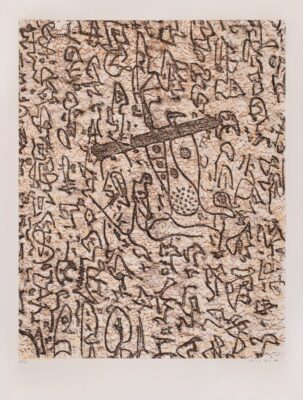Max Ernst
Max Ernst (1891–1976)
Max Ernst, born in Germany, was a painter, graphic artist, sculptor, and poet who became a central figure in both the Surrealist and Dada movements.
His father, a teacher of the deaf and an amateur painter, influenced Ernst’s early interest in drawing and painting. Though he never received formal artistic training, he studied psychology and philosophy at university, blending these ideas into his art and creating fantastical, dreamlike imagery that pushed beyond the boundaries of imagination. Living through turbulent times, Ernst developed a spirit of rebellion, a disdain for war, and a desire to break free from rationality. His life was marked by frequent relocations—from Germany to France to the United States and finally back to France—as well as multiple marriages. He died in 1976, one day before his 85th birthday, closing a life of perpetual movement and passion.
Ernst worked across painting, sculpture, and printmaking, producing dreamlike and sometimes nightmarish images often rooted in the anxieties of childhood. His constant experimentation with materials led him to invent the technique of frottage (from the French for “rubbing”). Much like the familiar practice of making rubbings, Ernst placed paper over textured surfaces such as old wooden floors and rubbed with pencil or crayon. What distinguished his practice was how he transformed these accidental, unpredictable patterns into entirely new narrative scenes—mysterious forests, hybrid creatures, and landscapes drawn from the subconscious.
Current & Recent Exhibition
Artworks

猶太美術館作品展
Poster for the Jewish Museum
石版畫
Lithograph
64 × 49 cm, 1966
Price on Request



 中文
中文